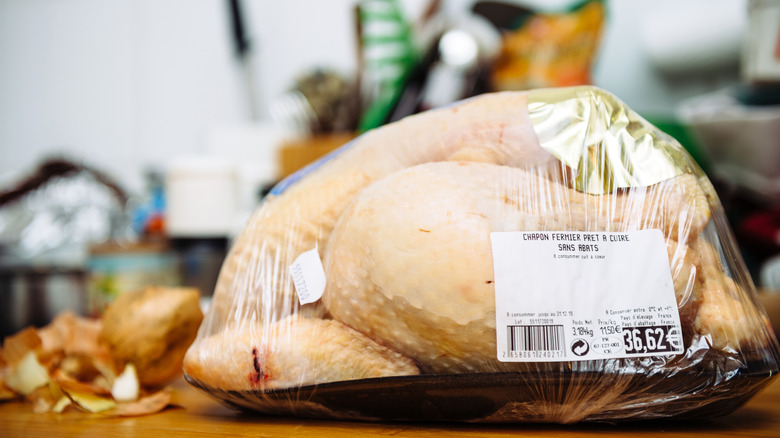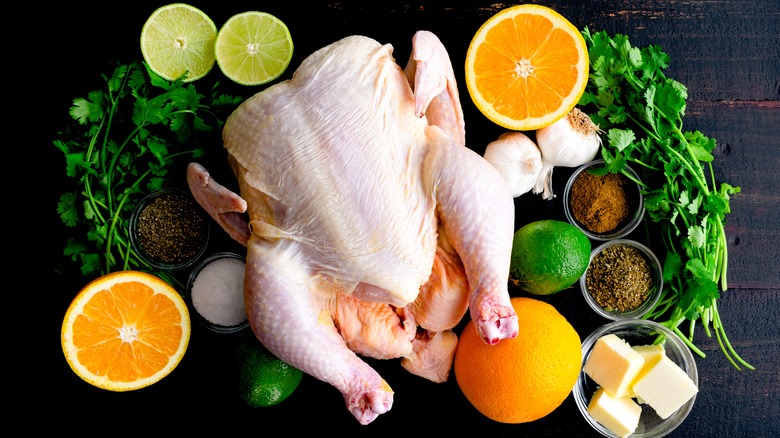What Makes Capon Different From Your Standard Chicken?
"What's in a name," wrote William Shakespeare, "that which we call a rose by any other name would smell as sweet." Regrettably, this famous adage does not apply to chicken, which probably has more names than any other animal — hen, pullet, and capon, to mention a few, yet they refer to slightly different things. However, few would recognize the difference when it comes to cooking or eating.
Chicken has become so popular that in 2020, it accounted for 94% of the world's poultry population (per Food and Agriculture Organization). From consumers' perspective, chicken is a healthier and less expensive option compared to other kinds of meat. And more farmers are favoring the bird because chicken has an attractive meat-to-feed ratio, a short production cycle, and, as we mentioned, high consumer demand, according to the Agriculture and Horticulture Development Board.
We're going to assume that if chicken interests you, you've had it, but you may not have sampled a capon. While a capon and a standard chicken have similar characteristics, you'll want to know what differences you can expect if you see a capon for sale.
All barnyard fowl is not the same
A capon is a rooster that is castrated before it matures, and this is done because a lack of testosterone causes more fat to form on the chicken's muscles. This may be more information than you wanted to know, but there's little dispute in the industry that fewer hormones in a male chicken make it more moist, tender, and flavorful. A capon will grow larger than a hen but not as large as a rooster. And according to Spruce Eats, while most farm chickens subsist on grains and food scraps, capons are given a richer diet of milk and porridge, which helps develop flavorful meat.
Capons cost more than hens because they are expensive to feed and are not mass-produced, which is why you won't see them sold at a chain supermarket. Spruce Eats reports, "this poultry was once considered a luxury, and during the early part of the twentieth century, the capon was the chosen bird for Christmas feasts, especially for the wealthy." Unfortunately, according to National Geographic, allowing male chickens to grow to adulthood isn't common, and capon may be a more humane use for them than the alternative.
So if you have a gourmet market nearby, try picking up this treat that's been rare for decades.

